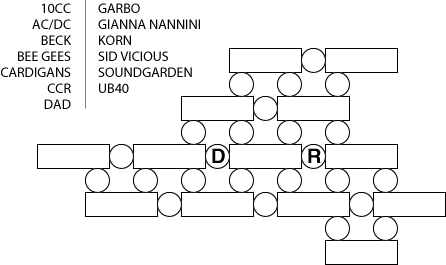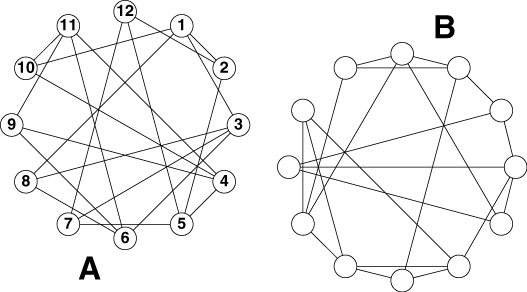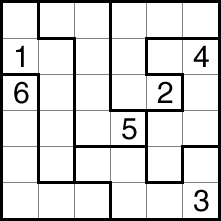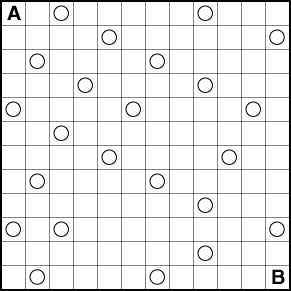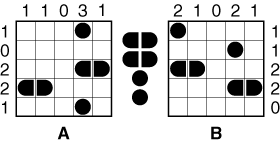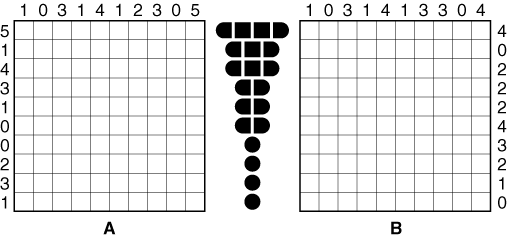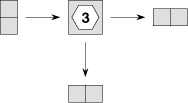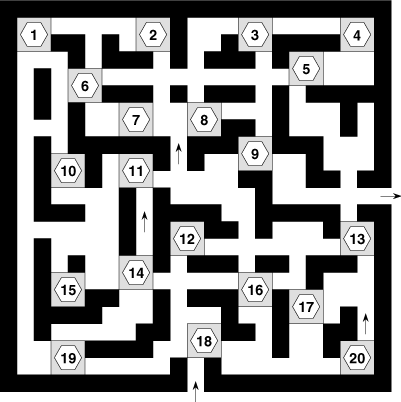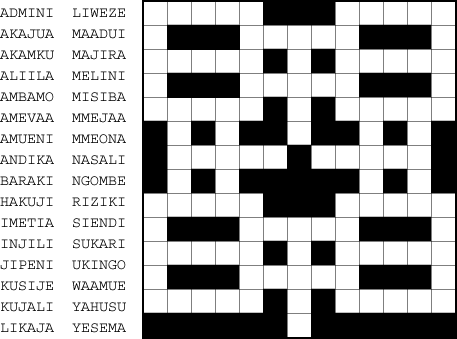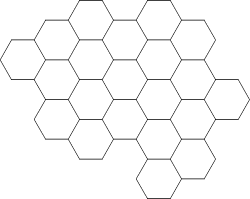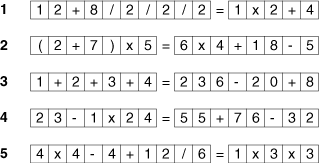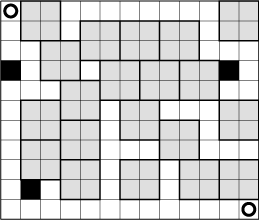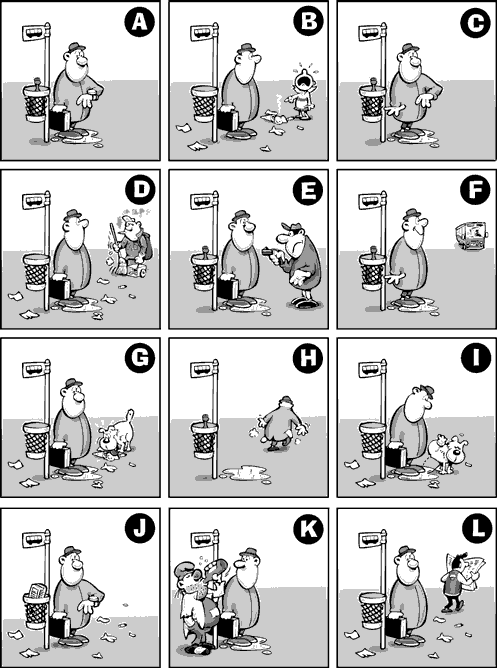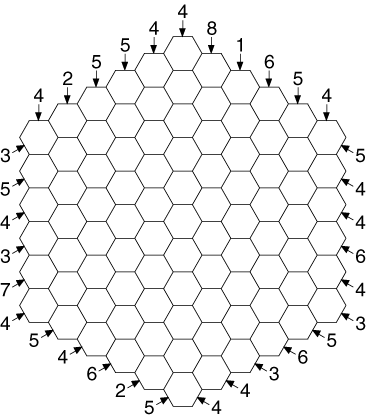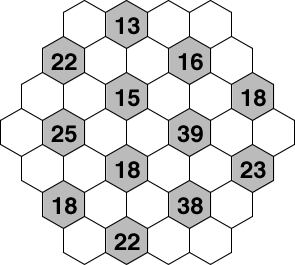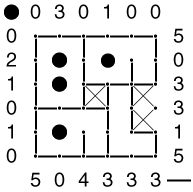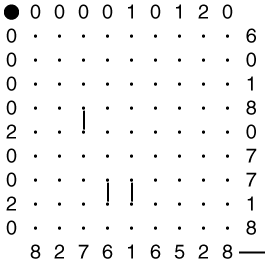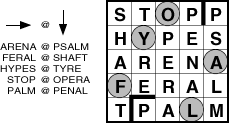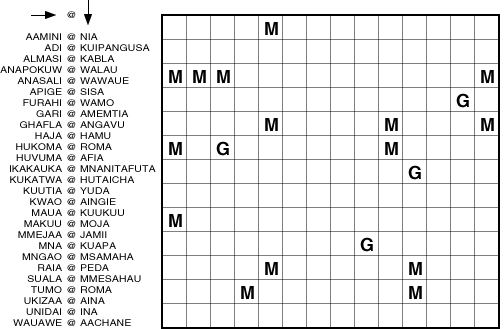
|
WPC11 Sample PuzzlesBand Aid Place the thirteen music bands and artists into the rectangles. Each circle connecting two rectangles must contain a letter or number that is common to the names on either side. Do this so that for each rectangle, all of the connected circles contain different symbols.
Elastic Bands Place the numbers 1 through 12 into figure B so that it is topologically equivalent to figure A (any two numbers that are connected in one figure must also be connected in the other).
Special Latin Square Place numbers in the grid so that all the rows, columns and outlined areas each contain the numbers 1 through 6.
Circular Path Find a path from A to B so that you pass through every circle once. The path may not touch itself, not even diagonally. Example:
Moving Battleships A fleet of ships was located in grid A. The ships then simultaneously move exactly 3 units forward or backward (sideways and diagonal moves were not allowed), resulting in grid B. The numbers on top and to the side of the grids indicate how many squares are occupied in each column and row, respectively. The ships do not touch each other, not even diagonally. (While moving, they may have touched and slipped around each other, but did not overlap; see example.) Determine the initial position of the ships in grid A and the final position in grid B. Example:
Rotating Block Maze Move a 1x2 block through the maze; the enter and exit points are indicated by arrows. When moving the block, you may not change the orientation of the block but must move it either forward or sideways. Every time the block passes through a numbered 2x2 cell, it changes shape from 1x2 to 2x1 (or vice versa). When you enter a cell from one side, you must exit it through a different side.
You may pass through the same cell more than once but you may not re-enter if before first passing through another cell. You do not have to pass through every cell. One-way paths are marked with arrows. Cornering Ability This crisscross is like a regular crisscross except that for each word, either the first or last letter must go around a corner to make the word fit. Example:
Hex Discrimination Divide the figure into three identical regions using only the grid lines. The regions must have the same size and shape, but may be rotated and/or reflected.
Black Out Math For each problem, paint two cells black to make the equation correct. Standard algebra rules apply (multiplication and division go before addition and subtraction; otherwise operations are performed from left to right, unless surrounded by parentheses). Example:
Passing Through Connect the two white circles with a path that passes through exactly one cell of each gray 2x2 square. The path moves horizontally and vertically between cells, and cannot cross itself or pass through a black cell.
What a Mess! Put the pictures of the cartoon in the correct order.
Six-Packs A "six-pack" is a group of six shaded cells that touch each other, but do not touch another six-pack. Locate 8 six-packs in the grid below so that numbers at the sides indicate how many shaded hexagons you'll encounter in the indicated direction.
Hexum Use the numbers from 0 to 9 to fill the empty cells. The numbers surrounding each gray clue cell must all be different and total the clue value.
Big Figures Place the ten digits in the grid. Digits may be rotated but not reflected. The numbers on top and on the left indicate the number of black circles in the corresponding column and row. The numbers at the bottom and on the right show the number of line segments in the corresponding column and row. Example
(using digits 6-9): Digits:
@ Crossword Fill the grid using the given word pairs. The words in each pair will intersect each other, with the first going across and the second going down. After you place the crossing pairs into the grid, add bars before and after each word to prevent other words from overlapping end-to-end. All the G's and M's have been placed into the grid. Example
(5x5 diagram):
SolutionsClick HERE for solution page. |
|
Copyright © 1999-2008 U.S. Puzzle Championship |
